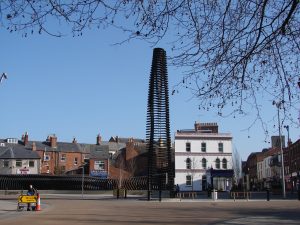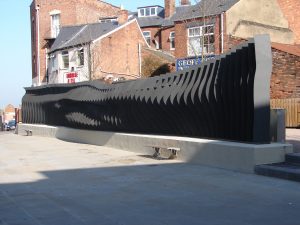
 Medieval anchorites play a role in three of my Lady Apollonia West Country Mysteries set in the late 14th and very early 15th centuries. Anchorites were men or women, each of whom was a type of religious hermit who had taken a vow to withdraw from the world and remain permanently in one dwelling or cell, usually attached to a church, for the rest of one’s life. As each prepared to enter their cell for the first time, the anchorite went through an act of consecration resembling a funeral rite. Thereafter, he or she answered only to the bishop of the diocese in which they resided. In the 14th, early 15th centuries of my novels, female anchorites outnumbered the men. The most famous of all anchorites of the period was Mother Julian of Norwich.
Medieval anchorites play a role in three of my Lady Apollonia West Country Mysteries set in the late 14th and very early 15th centuries. Anchorites were men or women, each of whom was a type of religious hermit who had taken a vow to withdraw from the world and remain permanently in one dwelling or cell, usually attached to a church, for the rest of one’s life. As each prepared to enter their cell for the first time, the anchorite went through an act of consecration resembling a funeral rite. Thereafter, he or she answered only to the bishop of the diocese in which they resided. In the 14th, early 15th centuries of my novels, female anchorites outnumbered the men. The most famous of all anchorites of the period was Mother Julian of Norwich.
In Effigy of the Cloven Hoof, my first book, I use the writings of Julian of Norwich, entitled Revelations of Divine Love. This is thought to be the first book written in the English language. The cell she occupied was attached to Saint Julian’s Church for which she was named. Her writings provided great spiritual comfort to my fictional heroine, Lady Apollonia of Aust, when she was struggling to recover from the brutal death of her first husband. To do this I stretched history a bit because these writings were not available until a few years later.
A hermit in my 3rd book, Memento Mori, had no known name. He is based on a real hermit who arrived in Gloucester abound the time of my novel in 1392. His cell was attached to Saint Kyneburgh’s Chapel near the South Gate of Gloucester. Although my hermit left his cell to pray in the chapel at night and to visit Kyneburgh’s Well nearby, the plot of my story takes him further afield than an anchorite would normally go to protect his saint from threatening evil activities. Today a modern tower marks this site, and a modern sculptural fence ends about the place where his cell would have been located. In the left-hand-picture above, the fence is to the left of the tower. In the other picture, the right-side of the fence ends where the hermit’s cell was attached to the chapel.
The anchorite in my fifth book, Joseph of Arimathea’s Treasure, set in 1397, is purely fictional. He is called Brother Johanus, and I have attached his cell to the south transept of the Church of Saint John the Baptist in Glastonbury. This medieval church still serves Glastonbury, and I was able to worship there with my husband on the Sundays we were in Glastonbury doing research for this book. In my story, this parish church was very active, and people coming and going to the church did interact with the anchorite through his open portal. He, however, never left his cell.
For more information on anchorites, click on https://en.wikipedia.org/wiki/Anchorite
Tags: Chaucer's England, historical fiction, medieval mysteries